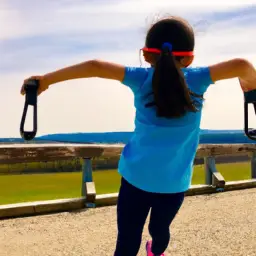Are you tired of seeing students disengaged and lacking motivation in the classroom? Have you considered the role that grit plays in their academic success?
Grit, defined as the perseverance and passion for long-term goals, has been shown to have a significant impact on student engagement and motivation in education. Studies have found that students who possess grit are more likely to be engaged in their learning, persist through challenges, and ultimately achieve academic success.
However, the relationship between grit and engagement/motivation is not always straightforward and can be influenced by various factors. As an educator or policymaker, it is important to understand the impact of grit on student success and how to foster this trait in students.
Key Takeaways
- Grit has a significant impact on student engagement and motivation in education.
- Cultivating grit helps individuals become more determined to achieve their goals and less likely to give up when faced with obstacles.
- Assessing grit is a crucial step in understanding how motivated and engaged a student is in their education.
- By teaching character education and perseverance training, educators can help students develop grit and overcome challenges in school and in life.
Defining Grit and Its Importance in Education
Defining grit and its importance in education is being examined to see how it can impact student engagement and motivation.
Grit is defined as the ability to persist in pursuing long-term goals despite facing obstacles and setbacks. It involves having a growth mindset, being self-disciplined, and having a passion for what you do.
In education, grit plays a crucial role in helping students achieve academic success and develop essential life skills. By teaching character education and perseverance training, educators can help students develop grit and overcome challenges that they may face in school and in life.
Through perseverance training, students can learn to develop resilience, persistence, and determination, which are essential for succeeding in academics and beyond.
The Impact of Grit on Student Engagement
When it comes to the impact of grit on student engagement, you’ll find that it can help increase your focus and commitment to your studies.
By developing a gritty mindset, you’ll be better equipped to persevere through challenges and setbacks.
This, in turn, can lead to improved attendance and participation in class, as you’ll be more motivated to show up and engage with the material.
Increased Focus and Commitment
You’ll notice a significant difference in your focus and commitment when you cultivate grit in your approach to learning. With grit, you become more determined to achieve your goals and less likely to give up when faced with obstacles. Grit helps you stay focused on your long-term objectives and motivates you to keep going even when progress seems slow or non-existent.
In addition to improving your focus and commitment, cultivating grit also has long-term benefits. When you measure your progress through the lens of grit, you’re more likely to see setbacks and failures as opportunities for growth and learning. You’ll be less likely to give up on your goals and more likely to persist despite challenges.
Over time, this persistence can lead to significant achievements and personal growth, ultimately helping you achieve success in your academic and professional endeavors.
Improved Attendance and Participation
By cultivating grit, you’re more likely to show up and actively participate in your academic pursuits, leading to greater success and personal growth. Improved attendance and participation are two positive outcomes of grit that can have a significant impact on your academic performance.
When you’re determined and persistent in your pursuit of knowledge, you’re more likely to attend classes regularly and engage actively in the learning process. Behavioral interventions and peer support programs are two effective strategies that can help foster grit and improve attendance and participation.
Behavioral interventions can help you develop positive habits and routines that promote academic success, such as setting goals, prioritizing tasks, and managing time effectively.
Peer support programs, on the other hand, can provide you with a sense of community and belonging that can motivate you to stay engaged and committed to your academic pursuits.
By utilizing these strategies and cultivating grit, you can improve your attendance and participation in school, setting the foundation for success in all areas of your life.
The Relationship Between Grit and Motivation
Grit and motivation are closely intertwined, with individuals who possess high levels of grit being more likely to exhibit persistent effort and enthusiasm towards achieving their goals.
This relationship between grit and motivation has been studied extensively in the field of education, with researchers finding that students who exhibit high levels of grit tend to have higher levels of self-esteem and academic achievement.
This is because individuals with high levels of grit are more likely to persevere through difficult tasks, setbacks, and challenges, which ultimately leads to a greater sense of accomplishment and self-confidence. Furthermore, individuals with high levels of grit tend to be more motivated to achieve their goals, as they have a strong sense of purpose and direction.
This motivation stems from their belief that they can overcome any obstacle, and that their hard work and dedication will pay off in the end. As a result, students with high levels of grit are more likely to engage in their education and take ownership of their learning, which can lead to improved academic performance and a greater sense of satisfaction with their achievements.
Therefore, it’s crucial for educators to foster grit in their students, as it can have a significant impact on their motivation and overall success in school.
Factors That Influence the Relationship Between Grit and Engagement/Motivation
When examining the factors that influence the relationship between grit and engagement/motivation, it’s important to consider student background and context. This includes factors such as socioeconomic status, cultural background, and prior educational experiences.
Additionally, the assessment of grit itself can also impact this relationship, as different measures may capture different aspects of this trait. So, when exploring the link between grit and motivation, be sure to consider these contextual factors and the nuances of how grit is being measured.
Student Background and Context
As a student, you bring your unique background and experiences to the classroom, which can greatly impact your level of engagement and motivation. Some students may face challenges such as poverty, family issues, or learning disabilities that can make it difficult to stay focused and motivated in school.
On the other hand, cultural influences can also play a role in shaping a student’s attitudes towards education. For example, some cultures may place a higher value on academic achievement, while others may prioritize other aspects of life.
It’s important for educators to recognize and understand these factors in order to better support their students. By creating a classroom environment that is inclusive and culturally responsive, teachers can help students feel more connected and engaged in their learning.
Additionally, providing resources and support for students who may be facing challenges outside of school can also help to improve their motivation and overall academic success. Ultimately, by taking into account the unique backgrounds and contexts of their students, educators can help to foster a sense of grit and determination that can lead to long-term success.
Assessment of Grit
Measuring a student’s level of perseverance and passion for long-term goals can provide valuable insight into their potential for success. Assessing grit is a crucial step in understanding how motivated and engaged a student is in their education. However, it’s important to note that measuring grit isn’t a simple task.
The validity of grit assessments is a topic of debate among educators and psychologists. Some argue that self-report measures, such as the Grit Scale, may not accurately capture a student’s level of perseverance and passion. Others suggest that a combination of self-report measures and behavioral observations may provide a more comprehensive understanding of a student’s grit.
Additionally, contextual factors, such as cultural background and socioeconomic status, may impact the validity of grit assessments. Overall, while measuring grit can provide valuable insights into a student’s engagement and motivation, it’s essential to consider the limitations and context of these assessments.
Factors that impact the validity of grit assessments:
- Self-report measures may not accurately capture a student’s level of perseverance and passion.
- Combination of self-report measures and behavioral observations may provide a more comprehensive understanding of a student’s grit.
- Contextual factors, such as cultural background and socioeconomic status, may impact the validity of grit assessments.
Strategies for Fostering Grit in Students
You can foster grit in your students by incorporating opportunities for them to take risks and learn from failure. Encourage your students to pursue their passions and set challenging goals. Create a safe and supportive learning environment where students feel comfortable taking risks and making mistakes. Provide constructive feedback and encourage self-reflection to help students learn from their failures and mistakes. It’s also important to foster peer support and collaboration, as students can learn from each other and build resilience together.
To help you get started, here’s a table with some strategies for fostering grit in your students:
| Strategies for Fostering Grit | Examples |
|---|---|
| Encourage Risk-Taking | – Encourage students to pursue their passions – Set challenging but achievable goals – Create a safe and supportive learning environment where students can take risks |
| Provide Constructive Feedback | – Provide feedback that is specific, timely, and actionable – Encourage self-reflection to help students learn from their failures and mistakes |
| Foster Peer Support and Collaboration | – Encourage students to work together and learn from each other – Build a sense of community and belonging in your classroom – Provide opportunities for students to give and receive feedback from their peers |
By implementing these strategies, you can help your students develop the resilience and perseverance needed to succeed in school and beyond. Remember, grit is not something that can be taught overnight – it requires time, effort, and dedication. But with your support and guidance, your students can develop the grit they need to achieve their goals and overcome obstacles along the way.
Implications for Educators and Policymakers
Now that you’ve learned about various strategies for fostering grit in students, let’s explore the implications of this concept for educators and policymakers. Grit is an essential quality that can have a significant impact on student engagement and motivation, making it a crucial factor in educational success.
As an educator or policymaker, it’s essential to understand the significance of grit and how it can be fostered in students. Here are five key implications to keep in mind:
-
Teacher training: Educators must be trained to identify and foster grit in their students, incorporating techniques such as growth mindset development and goal-setting strategies.
-
Funding allocation: Policymakers can allocate funding to schools that prioritize grit development, providing resources for teachers to implement grit-focused programs and initiatives.
-
Curriculum development: Grit can be incorporated into the curriculum through project-based learning, experiential learning, and personalized learning approaches.
-
Assessment strategies: Assessments can be designed to measure grit and provide feedback to students on their progress.
-
Parental involvement: Parents can play a vital role in fostering grit in their children by providing support and encouragement, setting goals, and modeling grit in their own lives.
By recognizing the importance of grit and taking steps to foster it, educators and policymakers can help students develop the skills they need to succeed in school and beyond.
Frequently Asked Questions
How does a student’s prior academic achievement affect their level of grit?
Your prior academic achievement plays a significant role in determining your level of grit. Studies have shown that students with higher academic achievement are more likely to possess higher levels of grit.
This correlation can be explained by the fact that students who have excelled academically have experienced setbacks and challenges in their academic journey and have developed resilience and perseverance as a result.
However, it’s important to note that socio-economic status also has an impact on a student’s level of grit. Students from lower socio-economic backgrounds may face more obstacles and challenges in their academic journey, which can affect their level of grit.
Therefore, it’s crucial to provide all students with the necessary support and resources to help them develop and maintain high levels of grit.
Is there a specific age or grade level at which grit development is most critical?
If you’re wondering, there’s a specific age or grade level at which grit development is most critical, and the answer is yes. Early intervention is key to developing grit in students. Research shows that students who learn to persevere and push through challenges from an early age are more likely to continue exhibiting these traits as they get older.
Long term effects of developing grit include increased motivation, better academic performance, and higher levels of engagement in school. This means it’s important for educators to focus on building grit in students starting from a young age.
Can grit be taught or is it a personality trait that is fixed?
So, can grit be taught or is it a personality trait that’s fixed? The good news is that grit can indeed be taught.
While some people may naturally possess more grit than others, it’s not an innate characteristic that can’t be developed. In fact, teaching grit is becoming increasingly important in the education system.
By teaching grit, students are better equipped to face challenges and persevere through difficult times. However, teaching grit comes with its own set of challenges.
It’s important to remember that grit is not the same as talent, and that talent alone doesn’t guarantee success. Strategies for teaching grit include teaching students to set goals, embrace failure, and practice self-discipline.
By doing so, students can learn to develop their grit and become more successful in their academic and personal lives.
How does a student’s cultural background influence their level of grit?
Your cultural background can have a significant impact on your level of grit. Cultural biases, both implicit and explicit, can affect how much value you place on perseverance and determination.
Additionally, parental influence plays a role in shaping a student’s mindset towards grit. Parents who prioritize resilience and hard work can instill these values in their children, while those who prioritize other traits may not.
Therefore, a student’s cultural background and upbringing can shape their level of grit and influence their motivation and engagement in education.
Are there any negative consequences to promoting grit in education, such as increased stress or burnout?
When it comes to promoting grit in education, it’s important to acknowledge the potential negative consequences.
Across different educational systems, there is a prevalence of grit being promoted as a necessary trait for success. However, this can lead to increased stress and burnout for students who feel pressured to constantly persevere and never give up.
It’s important to balance the promotion of grit with an emphasis on self-care and mental health. Research has shown that excessive focus on grit can lead to negative effects on mental health and well-being.
It’s crucial to encourage students to develop their own individual strengths and to recognize that success can come in many different forms, not just through sheer determination and persistence.
Conclusion
Congratulations! You’ve learned about the importance of grit in education and how it impacts student engagement and motivation. Grit refers to the perseverance and passion for long-term goals, and it has been found to have a positive impact on student outcomes.
By fostering grit in students, educators can help them develop the resilience and determination needed to succeed academically and in life. This can be achieved through a variety of strategies, such as setting challenging goals, providing opportunities for students to practice perseverance, and offering support and encouragement along the way.
As an educator or policymaker, you can make a difference by prioritizing the development of grit in your students. By doing so, you can help them become more engaged and motivated learners who are better equipped to overcome challenges and achieve their goals.
So, go ahead and take action today – your students will thank you for it!









































































































